Can a person in a wheelchair live alone?
Yes, it’s possible; with modifications in crucial areas such as bathrooms, doors, and the kitchen, as well as specially designed tools, people in wheelchairs can live alone.
But you shouldn’t rule out human help, especially when needed.
Please keep reading to find out how a disabled person can live on their own.
READ MORE: eVolt Traveler Power Chair Review
Table of Contents
Can a Person in a Wheelchair Live Alone?
The number of people using wheelchairs grows every year.
According to a study published on Academia.oup.com, the number of people using wheelchairs increased by 83% between 1980 and 1994. This study also points out that there were 2.2 million wheelchair users in 2000.
With improved medical care, more people with mobility issues are surviving, and an increase in the population of aging seniors, this number is expected to grow exponentially.
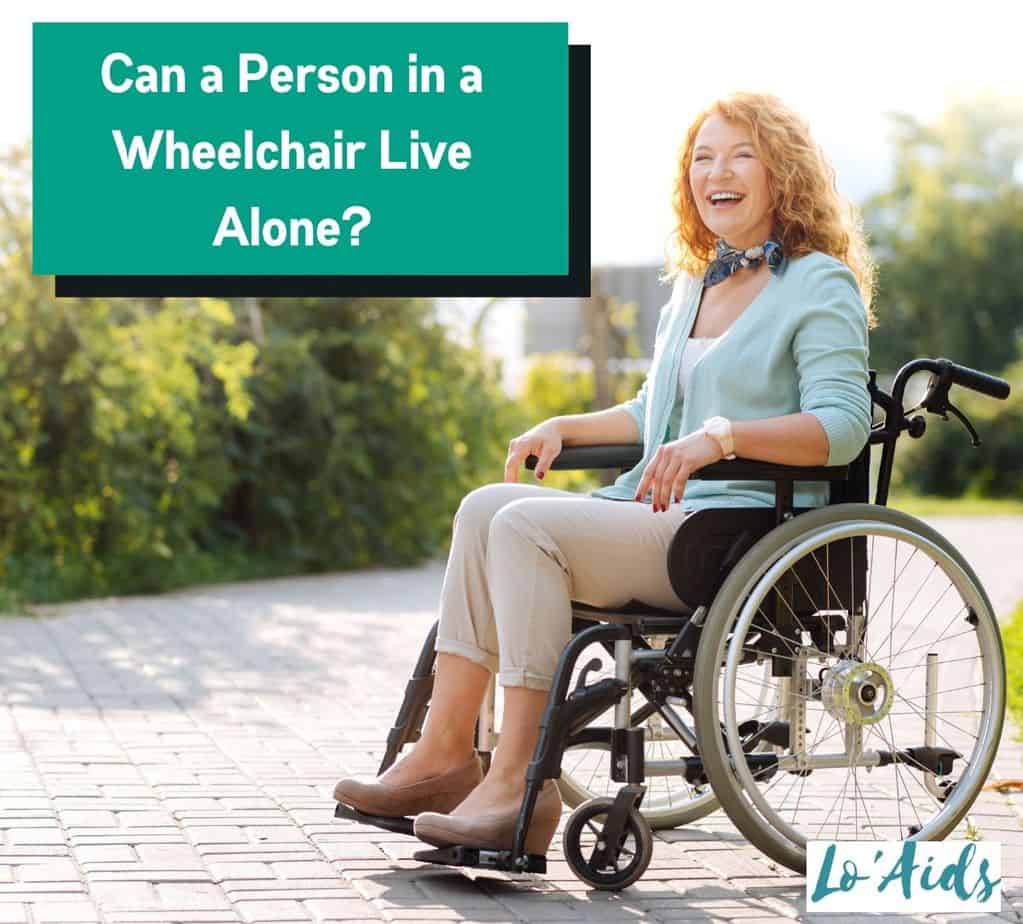
With the increase in more people with mobility issues, there’s also an increase in the need for assisted care.
If you’re a wheelchair user, you’ll most probably need someone to take you to the bathroom, help you change, cook, open doors, etc.
Of course, the level of limitations varies depending on age, gender, and even the type of illness or level of impairments, this study notes.
With the rising demand for health care, not all regions have enough service providers to meet this demand.
And those regions where they can get service providers, not everyone in the population can afford to pay for assisted care.
Caring.com, for instance, charges a basic cost of $4000 per month without including any other customizations necessary based on one’s needs.
It gets worse if the disabled person lives alone with no spouse or any other family member.
So, whether you’re considering being independent or can’t afford assisted care, you may be asking yourself, “can a disabled person live alone?”
Let’s answer this question.
Also check: How Can Two Wheelchair Users Live Together?
The Truth
The aforementioned study analyzed the living arrangement of people using wheelchairs across different age groups, income levels, and the availability of both paid and unpaid help.
They noted that while people on wheelchairs may need more hours of human assistance than people using canes, there are ways to go around that.
These include adjusting the home environment to suit these people.
For instance, the doors can be made wider and automatic, bathrooms can be made shorter, ramps can be installed, railings, etc. (we’ll look at these accommodations in detail later in the article).
These adaptations can minimize the need for human-assisted care, allowing disabled people to live on their own.
But in cases where human-assisted help is in shortage or wants to be independent by choice, people with disabilities can make the most out of the modifications in their homes to get by on their own.
How to Be Independent as A Wheel Chair User
If there’s one thing the study I just reviewed proves, it’s essential to learn how to be independent on a wheelchair since assisted care may not always be available.
And the good news is, you can. Below is how you can do it, some of the things you’ll need, and the home accommodations necessary for wheelchair users.
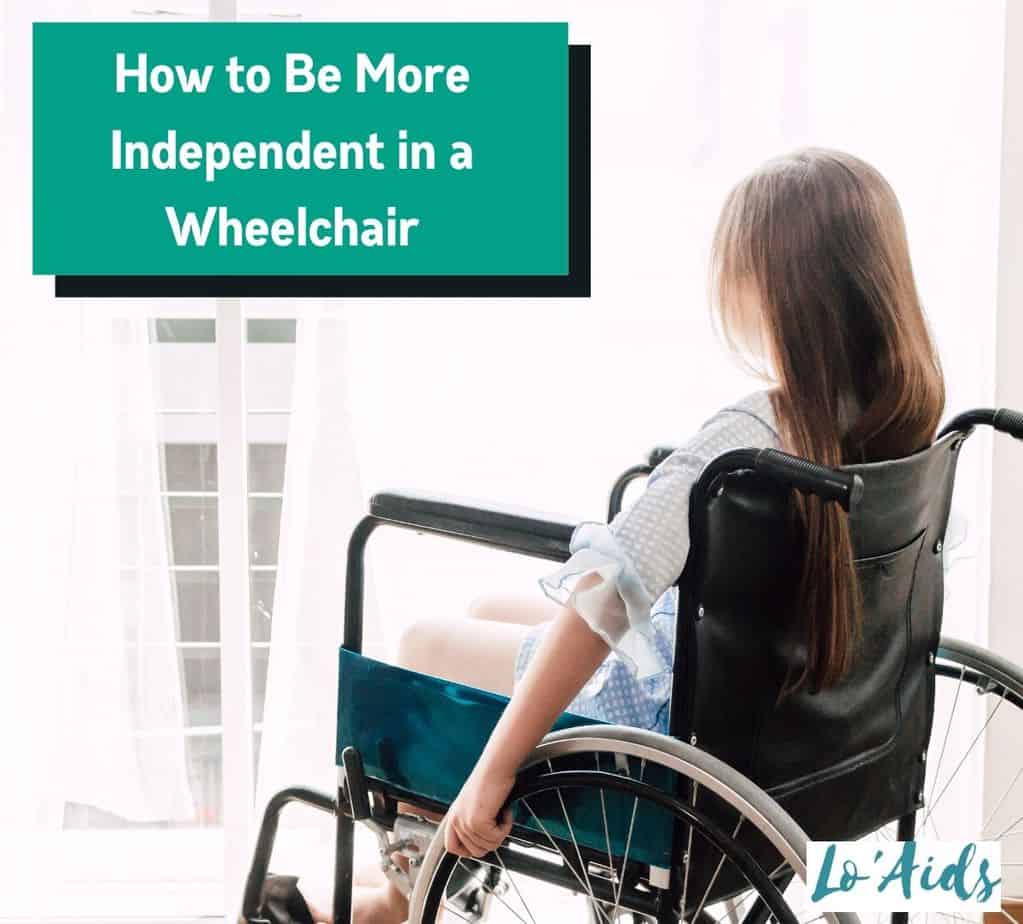
Also Check: Can You Be in a Wheelchair in Assisted Living?
7 Tips for Being Independent as a Wheelchair User
#1 Get Trained on How to Use a Wheelchair
The study published on academia.oup.com mainly focused on people who have used a wheelchair for at least a year.
So the participants in the survey were most probably experienced in using wheelchairs. But if you just started using one and are having trouble maneuvering with it and handling other daily living activities, you should get some training.
You will not only learn the basics, but you will also learn some complex moves. And the more skills you have in using a wheelchair, the more independent you’ll be.
A simple online search will show you institutions offering online training classes.
But if you want a more hands-on approach, you can check your local area or ask your doctor or other people who are using wheelchairs.
#2 Do What You Love
According to Grace Bluerock, a Certified Transformational Coach, engaging in work and recreational activities that you love can go a long way in improving your confidence, and you’ll have more energy in carrying out other daily living activities.
Your relationships will also improve. When you see other people handling their daily activities normally, you may get frustrated and irritable, destroying relationships with friends, workmates, and even family members.
But if you follow your interests, it will be easier to be around people, and the moments you spend alone won’t be so lonely anymore.
When you decide to live alone, your social life becomes quite limited.
So, it’s also crucial to schedule meetups with other people, especially wheelchair users, where you can share experiences, organize games, and have fun.
#3 Be Positive and Work on Your Fears
One of the biggest causes of fear and anxiety for people with disabilities is the limitations that come with it.
You fear that you may not be able to handle activities that a “normal” person would. But with the latest technological advancements, a wheelchair user can engage in daily activities like any other person.
So, what you need to do is find out one of the activities you’re afraid to do, find out how it can be done, and work on overcoming your fear.
You can consult a doctor, physiotherapist, or social worker on the best way to handle these activities. Family members and friends can also encourage you through this journey.
Be positive, and keep looking for more things you can do while in a wheelchair, even those that look impossible.
Do you want to go on a vacation? Try paragliding, skiing, kayaking, bowling, or any other intense physical activity?
Go for it. If physically intensive activities aren’t your jam, you can invite friends or family over and make them dinner.
The more you accomplish such activities, the more you realize that wheelchairs aren’t that limiting after all.
Speaking of vacations, did you know there are tour companies offering vacation options for people with disabilities? That’s right. And Conde Nast Traveller lists a number of them you can choose from. A wheelchair shouldn’t limit you to your local area. You can fly across the world like everyone else.
#4 Don’t Shut Everyone Else Out
Being independent doesn’t mean you shut everyone else. When you need help, ask someone to help you. And if someone offers to help out, there’s nothing wrong with that.
You can also find a family member or friend whom you can update about your life on a regular basis through video calls, regular calls, or texting.
As mentioned earlier, a combination of human help, whether paid or unpaid, and learning to be independent is the best way to live as a wheelchair user.
#5 Find Convenient Transportation
You can solicit public transportation in most states to go to work, malls, parks, or any other place. There are also local private transportation services that help people with disabilities, so make sure you check your local area or ask other wheelchair users.
#6 Visit Areas With Access Areas For Wheelchair Users
In most countries, the law requires that buildings include accessible areas for wheelchair users.
In the United States, there’s the Americans with Disabilities Act that requires all buildings have wheelchair ramps. Because there are many reasons why wheelchair ramp is important to have in all buildings.
These access areas are often marked with a large blue symbol and a person in a wheelchair drawn in white.
There are also apps, such as Wheely or Wheelmap, to help you identify buildings with access areas for wheelchairs.
#7 Modify a Car
As I mentioned earlier, thanks to technology, things keep getting better for people with disabilities.
If you own a car or were planning to own one, being in a wheelchair shouldn’t stop you from driving. You can have the vehicle customized to make it easier for you to use it independently. Also, there is an option to rent a wheelchair van, you may be get benefited from it.
The good thing is that health insurance companies can also help secure mobility aid and other modifications, including car modifications, so check with them to find out if they have a financing option for you.
#8 Stay Healthy
To live independently as a person with a disability, you need to engage in activities that maintain your physical and mental well-being. Below are some of them.
Workout
Both cardio and weightlifting help maintain a healthy weight, and they’ll also give you the strength and resilience you need to be independent.
Our bodies have different physical activity needs. So, consult your doctor on the best activities to engage in.
Working out 5 days a week is ideal. Remember, engage in activities you love, challenge yourself, and start slow.
You will also be in a gym with other wheelchair users, so it will also be a chance to be emotionally engaged. You can also team up in games such as basketball, swimming, etc.
If you follow the Olympics, you’ll note that these sports are modified for people with disabilities, and they are even allowed to compete in them.
Rest
Rest for 1 to 2 full days to allow your body to build muscle mass. You should also get up to 9 hours of sleep to regain your energy and keep you active throughout the day.
Watch Your Diet
According to Helen Bond, a dietician who has worked with people with disabilities, people in a wheelchair can gain weight faster because they may eat as they used to, and they’re not as active as they were before.
For weight loss and to maintain a healthy weight, you need to eat fewer calories and be more physically active.
But if you can’t engage in physical activity, you will have to rely on dieting. Your diet should include lots of starch, meat and other animal proteins, lots of vegetables, and some dairy products.
You should avoid sugary foods such as cakes, chocolate, or sodas. A nutritionist can help you come with the most suitable diet Based on your needs.
Drink Lots of Water
Water keeps you hydrated, especially when you’re into lots of physical activity. It also alleviates laziness and lethargy. Other ways to stay hydrated include eating lots of vegetables and fruits.
Things Needed to Live Alone
Besides being motivated and healthy, below are some useful tools that can make living independently easier.
#1 Emergency Clicker
This is a must-have device when living alone. Any accident can happen as you maneuver around the house and you can’t reach your phone or alarm.
But when you always have an emergency clicker with you, you can always call for help even when other devices are unreachable.
Besides getting the clicker, you should make sure the arrangement in your house is safe.
The furniture should be strategically placed, all appliances should be placed in a way that you can easily use them, and all switches and alarms should be accessible while in a wheelchair.
#2 Wi-Fi Enabled Smart Plug
These are plugs you place in your traditional electricity plugs and connect them to your home’s internet. What they do is allow you to control your electric appliances with your smartphone.
So, when you need to switch on or switch off the lights, you can do it from the comfort of your bed, sofa, or wheelchair. The same case applies when you want to control the fan, AC, or any other device.
#3 Shower Chairs
While you can make your bathroom wheelchair accessible, you don’t have to use the wheelchair you use in your daily activities in the shower. Instead, you can purchase shower chairs.
There are even wheeled shower chairs designed to make going to the shower, toilet, and getting by around the house easier.
They are convenient for people who can lift themselves and switch chairs and people who easily feel fatigued due to the transfers involved when using a standard wheelchair.
#4 Grabber Tool
With a grabber tool, half of the work involved in picking things up is done. They are light, cheap, and some can pick items that are as heavy as 5 pounds.
They are also not that expensive, so you can purchase several of them and place them in different areas around the house.
#5 Extendable Scrubber
One of the main aspects of living alone is having to clean your house. And since bending is quite difficult while in a wheelchair, a vacuum cleaner or steam cleaner with an extendable scrubber comes in handy.
Others are standalone mechanical scrubbers. Some of them are detachable, too, allowing you to clean walls, countertops, under the sofas, and other hard-to-reach areas.
#6 Mini Vacuums
Standard vacuum cleaners are quite heavy, so pulling them around on a wheelchair can be very tiring.
Luckily, there are smaller handheld vacuums that you can use to clean the floors, under sofas, and anywhere else you would clean with a regular vacuum cleaner.
#7 Mini Fridge
Having a main fridge in the kitchen is the norm, but for a wheelchair user, it’s sometimes inconvenient.
It sometimes feels daunting to get out of bed, hop on a wheelchair, and maneuver to the fridge to get something.
It would help if you had a mini-fridge close to your bed, study area, or any other room where you spend most of your time.
#8 Slow Cooker
Living independently also means that you have to cook. And cooking every time can be quite tiring.
But with a slow cooker, you can make large meals at once by adding the ingredients and leaving them for hours.
You can then split this food into smaller containers and freeze it for later. Better yet, you can add the breakfast ingredients at night, and you’ll find it ready in the morning, saving you time.
#9 Portable/Wheeled Storage Unit
These are shelved storage units with wheels, allowing you to move with your items around the house, and they make it easier for you to reach an object.
You can use them in the garage, office, bathroom, or bedroom.
#10 Automate Your Reminders for Medical Checkups
When living independently, you are responsible for monitoring symptoms, knowing when to take medication, keeping track of medical appointments, and making arrangements on how to get there.
A traditional diary can help, but smartphone apps are better.
Medisafe is one good app that can help you keep track of your medication. Your phone calendar can also come in handy in creating to-do lists and alerts.
And there are thousands of apps out there designed to make your life easier.
Home Accommodations for Wheelchair Users
Below are some home modifications to make your home more wheelchair accessible and make daily living easier.
Ramps
It’s impossible (as far as I know) to climb stairs with a wheelchair or if you have impaired mobility. That’s why you should consider installing ramps at every entrance of your house.
These are flat slanting structures that allow you to push yourself up an elevated structure and come down.
There are portable ramps that you can place over existing stairs. But you can also ask a construction specialist to install permanent ramps both indoors and outdoors.
Grab Bars
Also known as grab rails, or handrails, grab bars make it easier and safe to move around the house.
You can install them alongside the ramps, in bathrooms and toilets to prevent falls, and in staircases, if you have some ability to walk while supporting yourself.
Consider Stair Chair Lifts
If you live in a storied house or have several stairs outdoors, a stairlift can be quite convenient.
Once they are installed, all you have to is sit and press a button, and it will take you both up and down the stairs.
Elevators
This is a more expensive option compared to the ramps and stairlifts, but it’s worth it. Elevators can be installed in an existing house, and they make moving around the house easier and more fun.
Better yet, if you decided to sell the house, the elevator goes a long way in increasing its value.
Walk-in Bathtubs
Regular bathtubs have relatively tall sides all around them, making it difficult for a wheelchair user to get in.
However, walk-in bathtubs have a “door” that allows you to step in easily. And since you’re in, you can lock the door and enjoy the bathtub.
Automatic Doors
If you’re finding opening regular doorknobs challenging, consider installing automatic doors.
These doors can be opened with a remote device, be it a smartphone, remote control, or a button mounted on a wall.
Please make sure the automatic door has a bypass (most do) that allows you to use it manually in case of power issues or when you misplace the remote.
Eliminate Uneven Surfaces
Grout, rough tiles, uneven rugs, slippery tiles, or carpets can make it unsafe to move around the house.
Replace them with firm, even carpets, and make sure no section of the house is too slippery for you to walk with a cane or use a wheelchair for mobility.
Can A Person In A Wheelchair Live Alone FAQs
What is the most difficult thing for wheelchair users?
Mobility in public areas can be quite a challenge. Some places might be too steep to maneuver with a manual wheelchair. Some buildings may also lack wheelchair-accessible parking, entries, hallway, or toilets. Public transport can also be a challenge, especially if the bus isn’t designed for wheelchair users.
Is it safe for wheelchair users to be alone for a long time?
As long as the home environment is made convenient and safe for a wheelchair user, yes, it’s safe. However, this strongly depends on the level of impairment of an individual. It’s important to have emergency contacts for family members or health care service providers if something goes wrong.
Conclusion
So, can a disabled person live on their own? Yes. With home accommodations and the necessary tools, a wheelchair user can live independently.
However, you also have to pay attention to the level of impairment. If you’re mildly or moderately impaired, you can live alone. For severe impairments, though, you may need to enroll in Assisted Living programs.
References:
- Allen, Susan, Linda Resnik, and Jason Roy. 2006. “Promoting Independence for Wheelchair Users: The Role of Home Accommodations.” The Gerontologist 46 (1): 115–23. https://doi.org/10.1093/geront/46.1.115.
- “Assisted Living Options for Wheelchair Users.” n.d. Caring.com. Accessed May 20, 2021. https://www.caring.com/caregivers/assisted-living-for-wheelchair-users/.
- CDC. 2018. “Disability and Health – People with Disabilities.” Centers for Disease Control and Prevention. December 3, 2018. https://www.cdc.gov/ncbddd/disabilityandhealth/people.html.
- “How to Lose Weight in a Wheelchair.” n.d. Healthily. Accessed May 20, 2021. https://www.livehealthily.com/losing-weight/weight-loss-wheelchairs.
- Koontz, Alicia M., Dan Ding, Yih-Kuen Jan, Sonja de Groot, and Andrew Hansen. 2015. “Wheeled Mobility.” BioMed Research International 2015: 1–2. https://doi.org/10.1155/2015/138176.
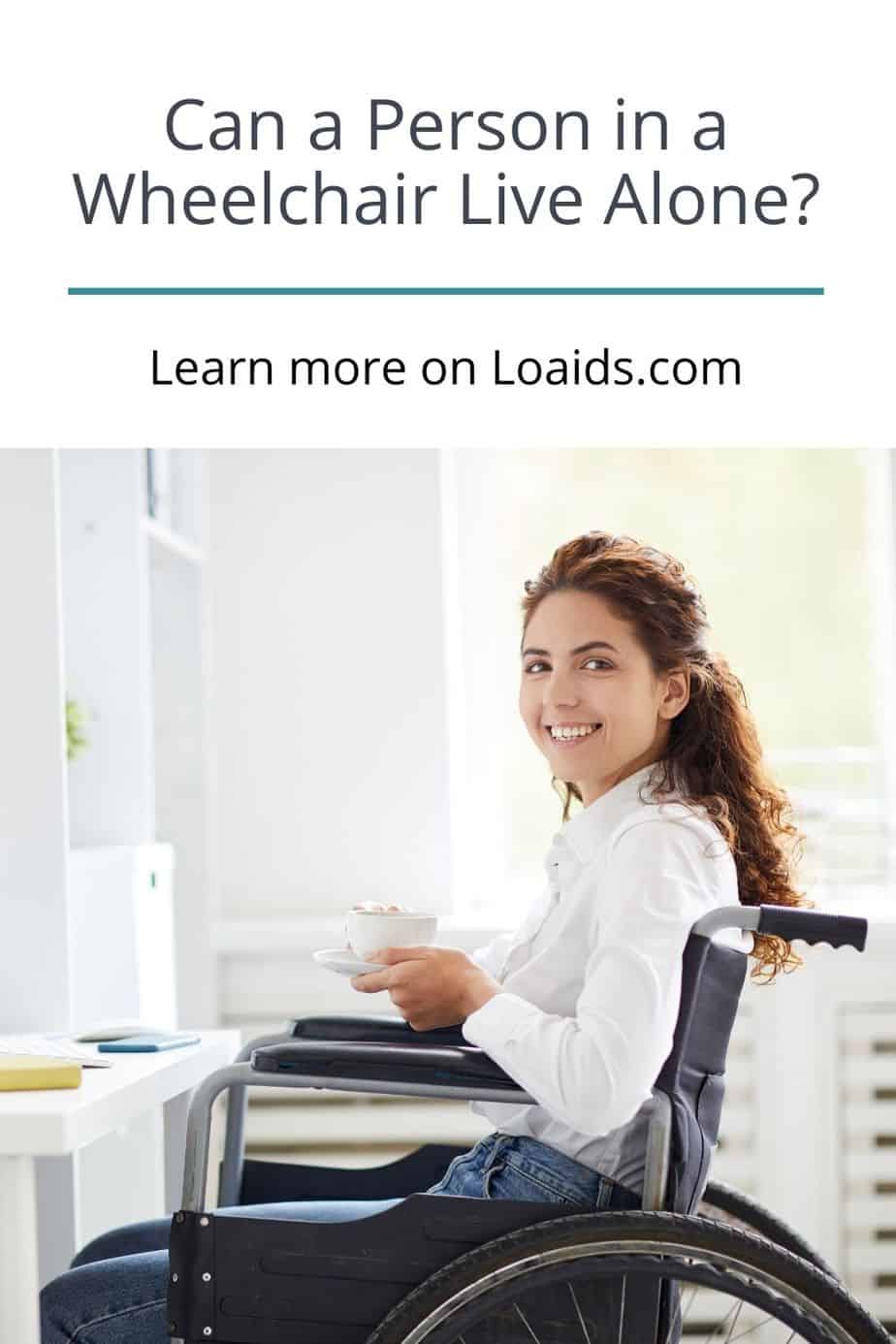
Can a person in a wheelchair live alone? What do you think? Share with us!



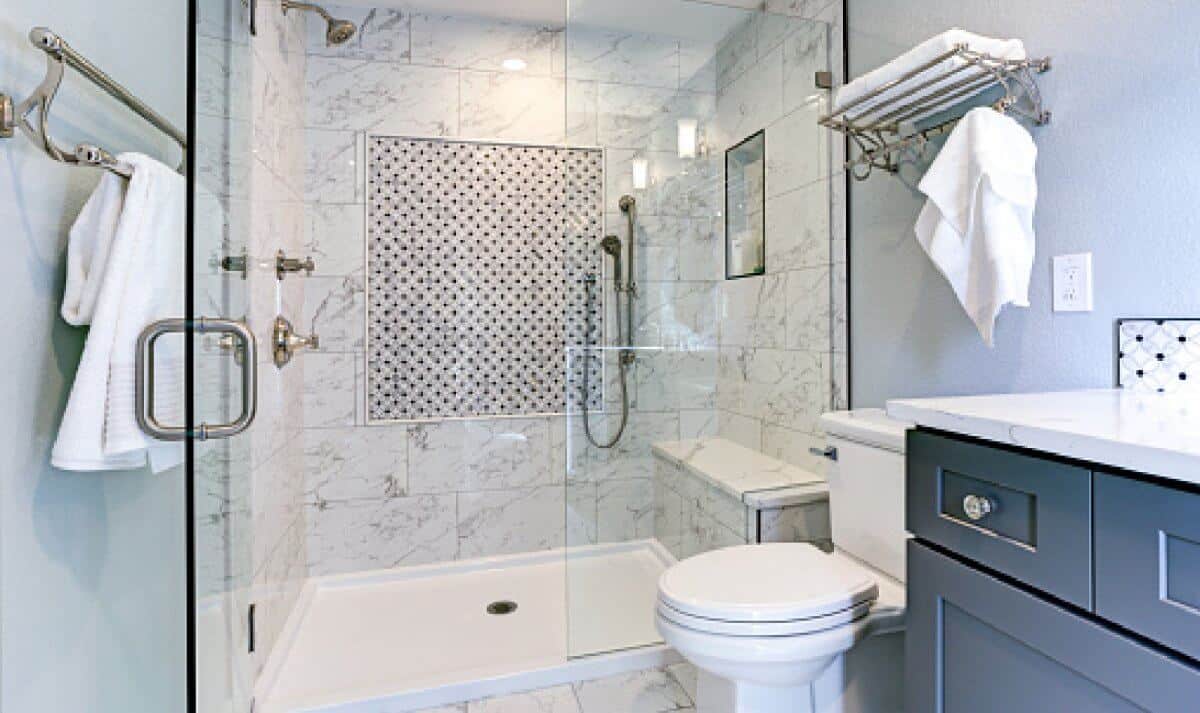

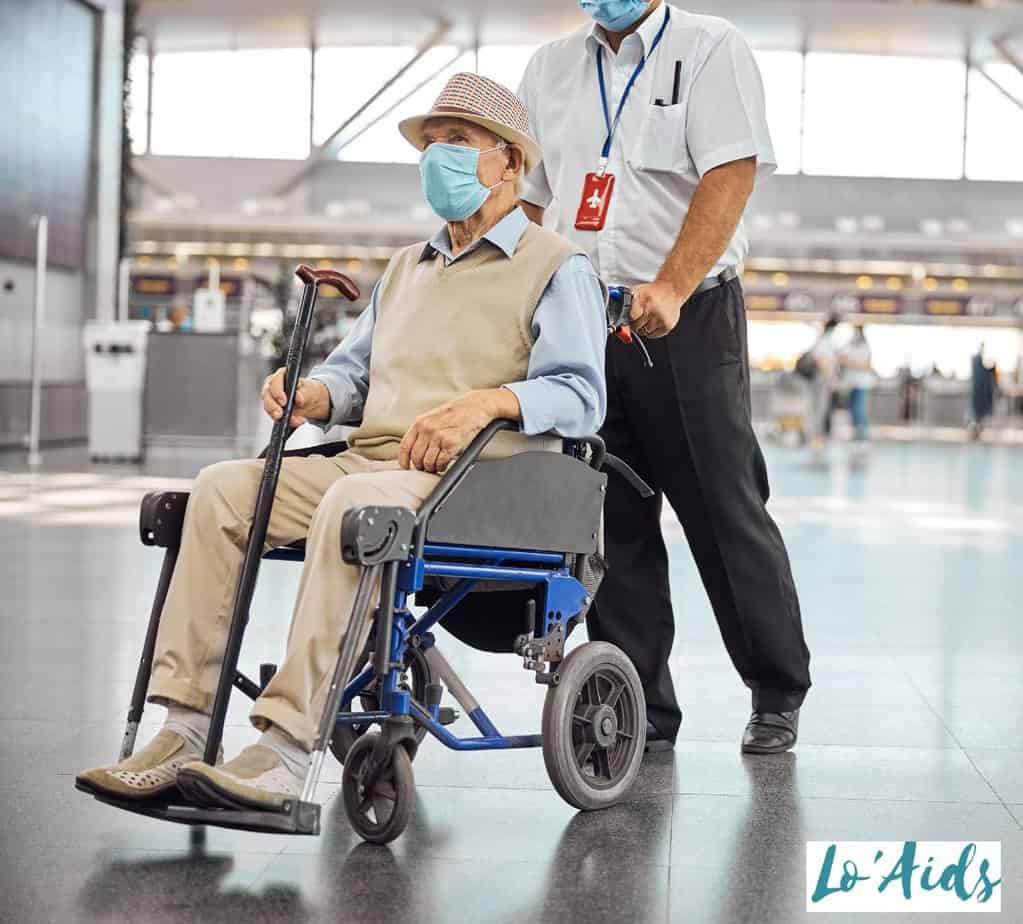
I thought that this was very interesting and caring for the actual real life a person in a wheelchair has to live with thank you for all your care and time to let people like myself in a wheelchair feel better about any Assurance you would need to conquer a daily life without fear